COVID-19 Update: Friday, October 30
The following is the latest COVID-19 information from the state and federal governments as of 2:45 p.m. on Friday, October 30.
Pennsylvania Update
Department of Health
 The Department of Health updated its hospital guidance to clarify that hospitals must test COVID-19 patients prior to discharge to another facility and communicate those test results to the receiving facility prior to discharge.
The Department of Health updated its hospital guidance to clarify that hospitals must test COVID-19 patients prior to discharge to another facility and communicate those test results to the receiving facility prior to discharge.
In response to an increase of new COVID-19 cases in Huntingdon County, the Department of Health has contracted for a drive-through and indoor testing clinic in the county. Testing will be available at the Huntingdon Plaza, Suite 7505, R. 22 and S. 4th Street in Huntingdon beginning on October 29 and running until Monday, November 2. The tests are free and no appointment is needed.
Department of Health – by the numbers
- Pennsylvania’s COVID-19 case count recently surpassed 200,000. The daily total has been in four figures every day this month except for one, which has not happened since the early months of the pandemic.
- Four times in the last nine days the state has totaled more than 2000 new cases – the first times the daily total has exceeded 2000 in any one day since the beginning of the pandemic.
- With today’s latest figures, the death count now exceeds 8700.
- Of that number, 61 percent have been residents of long-term-care facilities.
- Overall, nearly 26,000 residents of long-term-care facilities and more than 5600 people who work in those facilities have contracted COVID-19. Those figures encompass 1063 facilities in 63 of Pennsylvania’s 67 counties.
- More than 12,200 health care workers in the state have contracted COVID-19.
- The number of people currently hospitalized with COVID-19 is more than twice what is was on October 1 and is at its highest level since June 2.
- The number of COVID-19 patients currently breathing with the help of a ventilator also is more than twice what it was on October 1 and is at its highest level since mid-June.
- 20 percent of hospital adult ICU beds are currently unoccupied, as are 16 percent of medical/surgical beds, 31 percent of pediatric beds, 11 percent of pediatric ICU beds, and 38 percent of airborne isolation unit beds. The medical/surgical and medical/surgical ICU bed figures are similar to what they have been in recent weeks but both pediatric figures are lower than they have been recently.
Department of Human Services
 DHS’s Office of Long-Term Living and Office of Developmental Programs have updated their guidance on COVID-19 for personal care homes, assisted living residences, and private intermediate-care facilities.
DHS’s Office of Long-Term Living and Office of Developmental Programs have updated their guidance on COVID-19 for personal care homes, assisted living residences, and private intermediate-care facilities.
Federal Update
Provider Relief Fund
- A reminder that applications for Phase 3 general distribution payments are due November 6.
- Another reminder that HHS will hold a webcast about the Phase 3 general distribution on Monday, November 2 at 3:00 p.m. (eastern) for interested parties. Go here to register for the webcast and to submit questions. Also available are a fact sheet and a presentation about the Phase 3 general distribution.
- HHS has added or modified 61 questions in its Provider Relief Fund FAQ. The changes, labeled either “Added 10/28/2020” or “Modified 10/28/2020,” generally address auditing and reporting requirements for the Provider Relief Fund, including accounting for expenses and lost revenue, as well as the sharing of general distribution money among parent and subsidiary entities, executive salary cap calculations, and more. The modified and added questions and answers offer additional details about many issues so providers should review these changes carefully. The following excerpts address some specific matters about which providers have inquired:
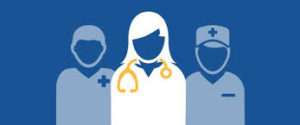 ” Healthcare related expenses attributable to coronavirus may include items such as supplies, equipment, information technology, facilities, employees, and other healthcare related costs/expenses for the calendar year. The classification of items into categories should align with how Provider Relief Fund recipients maintain their records.” [emphasis added]
” Healthcare related expenses attributable to coronavirus may include items such as supplies, equipment, information technology, facilities, employees, and other healthcare related costs/expenses for the calendar year. The classification of items into categories should align with how Provider Relief Fund recipients maintain their records.” [emphasis added]- “… providers that already have a cost allocation methodology in place, may allocate normal and reasonable overhead costs to their subsidiaries which may be an eligible expense if attributable to coronavirus and not reimbursed from other sources.”
- “HHS initially advised providers that once a subsidiary TIN attested to and accepted a General Distribution payment, the money must stay with, and be used by, the subsidiary TIN. However, HHS has received feedback indicating that some subsidiary TINs accepted a General Distribution payment prior to the release of this guidance, and that they would have had their parent TIN accept the money, had they known earlier of HHS’s position. In light of these timing concerns, HHS is revising its prior guidance and clarifying that, for General Distribution payments only, a subsidiary TIN can transfer its General Distribution payment to a parent TIN; this is true even if a subsidiary TIN initially attested to accepting a General Distribution payment. Consistent with other longstanding guidance, the parent TIN may use the money and/or allocate the money to other subsidiary TINs, as it deems appropriate. Regardless of which entity (the parent or subsidiary) attested to the receipt of the General Distribution payments, the parent entity can report on the use of the General Distribution payment as part of the HHS reporting process.”
- “In accordance with the Terms and Conditions, if you believe you have received an overpayment and expect that you will have cumulative lost revenues and increased costs that are attributable to coronavirus during the COVID-19 public health emergency that exceed the intended calculated payment, then you may keep the payment.”
- “Providers do not need to be able to prove, at the time they accept a Provider Relief Fund payment that prior and/or future lost revenues and increased expenses attributable to COVID-19 (excluding those covered by other sources of reimbursement) meet or exceed their Provider Relief Fund payment. Instead, HHS expects that providers will only use Provider Relief Fund payments for permissible purposes and if on June 30, 2021, providers have leftover Provider Relief Fund money that they cannot expend on permissible expenses or losses, then they will return this money to HHS.”
- “The Terms and Conditions associated with each Provider Relief Fund payment do not permit recipients to use Provider Relief Fund money to pay salaries at a rate in excess of Executive Level II which is currently set at $197,300. For the purposes of the salary limitation, the direct salary is exclusive of fringe benefits and indirect costs. The limitation only applies to the rate of pay charged to Provider Relief Fund payments and other HHS awards. An organization receiving Provider Relief Fund payments may pay an individual’s salary amount in excess of the salary cap with non-federal funds” An example aggregate calculation is provided.
- Again, we strongly encourage providers to review all of the 10/28 additions and modifications of the Provider Relief Fund FAQ.
Centers for Medicare & Medicaid Services
 CMS has published an interim final rule that calls for several regulatory changes driven by the COVID-19 pandemic.
CMS has published an interim final rule that calls for several regulatory changes driven by the COVID-19 pandemic.- All Medicare beneficiaries, including Medicare Advantage participants, will pay nothing for COVID-19 vaccines, as will most Medicaid beneficiaries. Most private insurers are required to cover the vaccines as well. Vaccines for the uninsured will be reimbursed in the same manner as care for the uninsured that is reimbursed through the Provider Relief Fund.
- Medicare will make enhanced payments for eligible inpatient cases that involve use of certain new products authorized or approved to treat COVID-19. The enhanced payments will be equal to the lesser of: (1) 65 percent of the operating outlier threshold for the claim; or (2) 65 percent of the cost of a COVID-19 stay beyond the operating Medicare payment (including the 20 percent add-on payment under section 3710 of the CARES Act) for eligible cases.
- States will retain their ability to gain an additional, temporary 6.2 percentage point increase in their federal medical assistance percentage (FMAP, the rate at which the federal government matches state Medicaid spending) if they agree to maintain the enrollment of “validly enrolled beneficiaries” through the end of the month in which the COVID-19 public health emergency ends. States are permitted to make changes in beneficiary coverage, cost-sharing, and post-eligibility treatment of income.
- This rule expands on previous CARES Act requirements that providers of COVID-19 tests publicize the cash prices for such tests, requiring that every provider of COVID-19 diagnostic tests make public on the internet the cash price for a COVID-19 diagnostic test.
- This rule extends the Comprehensive Care for Joint Replacement Program’s Performance Year 5 an additional six months, to September 30, 2021, changes the reconciliation periods for the program, and makes other changes in the program.
- For further information about this new interim final rule, see the following resources:
- CMS’s announcement about the new policy
- the interim final regulation itself
- a CMS fact sheet
- a separate CMS fact sheet on the Medicaid enrollment aspects of the regulation
- for questions about the Comprehensive Care for Joint Replacement model, contact CMS at CJRSupport@cms.hhs.gov.
- CMS has published its annual update of home health payment rates for calendar year 2021. Included in this rule is a provision that makes permanent changes in home health regulations introduced as temporary in the March 2020 “Policy and Regulatory Revisions in Response to the COVID–19 Public Health Emergency” Interim Final Rule with Comment. Under this provision, the temporary ability of home health agencies to use telehealth in the provision of home health care to qualified Medicare beneficiaries is now made permanent. Learn more about this important change and other aspects of the 2021 home health regulation in this CMS news release.
- CMS has updated its document “COVID-19 Frequently Asked Questions (FAQs) on Medicare Fee-for-Service (FFS) Billing.” Updated information on pages 120 and 121 addresses temporary COVID-19 waivers that enable hospitals to provide certain outpatient services in alternative care settings. Both updates are labeled “New: 10/28/20.”
Department of Health and Human Services
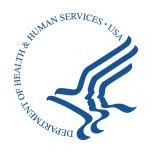 HHS announced that it will distribute $333 million in first round performance payments to more than 10,000 nursing homes for achieving significant reductions in COVID-19-related infections and deaths between August and September. Nursing homes will receive September quality incentive payments next week and will have four more opportunities to receive additional incentive payments. Go here to see CMS’s announcement about the awards and go here to see a state-by-state breakdown of those awards.
HHS announced that it will distribute $333 million in first round performance payments to more than 10,000 nursing homes for achieving significant reductions in COVID-19-related infections and deaths between August and September. Nursing homes will receive September quality incentive payments next week and will have four more opportunities to receive additional incentive payments. Go here to see CMS’s announcement about the awards and go here to see a state-by-state breakdown of those awards.- HHS’s Administration for Community Living hosts a monthly webinar series that invites subject matter experts and practitioners from across the home-and-community-based services (HCBS) spectrum to share insights and best practices to develop high-quality HCBS services and programs. The next webinar will be held on November 12 at 3:00 (eastern) and feature payer and provider industry leaders discussing changes their industries have experienced since the beginning of the COVID-19 emergency and what lies ahead for them. Several payers and providers will share innovations they used to address COVID. Go here for more information and to register for the webinar.
Centers for Disease Control and Prevention
- The CDC has updated its guidance on when individuals should quarantine.
- The CDC has updated its interim clinical guidance for managing patients with confirmed COVID-19.
- The CDC has posted several documents on reinfection with COVID-19. They include:
- The CDC’s weekly morbidity and mortality report presents new research on COVID-19 mitigation behaviors according to age group in the U.S. between April and June.
- The CDC’s weekly morbidity and mortality report presents new research on trends in the use of telehealth during the emergence of the COVID-19 pandemic from January through March in the U.S.
- The CDC has released its latest COVID-19 science update. The update includes sections on vaccines, epidemiology, clinical treatment and management, and laboratory science.
Food and Drug Administration
 The FDA has updated its enforcement policy for non-invasive remote monitoring devices used to support patient monitoring during COVID-19 emergency.
The FDA has updated its enforcement policy for non-invasive remote monitoring devices used to support patient monitoring during COVID-19 emergency.- The FDA has approved two generic drugs that facilitate tracheal intubation and to provide skeletal muscle relaxation during surgery or mechanical ventilation: succinylcholine chloride injection USP 200 mg/10 mL and cisatracurium besylate injection USP 10 mg/5 mL.
- The FDA has updated its Antigen Template for Test Developers that presents the agency’s current recommendations about data and information that should be submitted to the FDA in support of an emergency use authorization request for a COVID-19 antigen test.
Congressional Research Service
The Congressional Research Service has published the new report “COVID-19 and the Uninsured: Federal Funding Options to Pay Providers for Testing and Treatment.”
Resources to Consult
Pennsylvania Department of Human Services
Pennsylvania Department of Health
Centers for Disease Control and Prevention
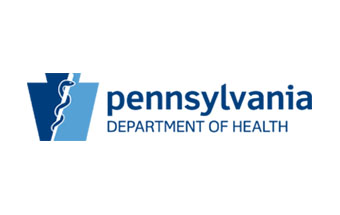
 The rate of response to contact tracing efforts is not very good, but Secretary Levine reports that among those who have recently been diagnosed with COVID-19 and who responded to inquiries about their recent whereabouts, 55 percent said they had visited a restaurant in the past two weeks and 13 percent said they had visited a bar.
The rate of response to contact tracing efforts is not very good, but Secretary Levine reports that among those who have recently been diagnosed with COVID-19 and who responded to inquiries about their recent whereabouts, 55 percent said they had visited a restaurant in the past two weeks and 13 percent said they had visited a bar. The CDC has updated its
The CDC has updated its 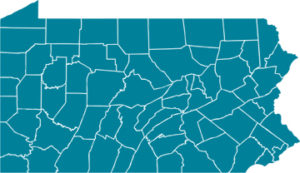 Created in July to help long-term-care facilities address their struggles responding to the COVID-19 emergency, the state has six RRHCs led by 11 Pennsylvania health systems. The RRHCs were created to provide clinical, operational, technical, and educational support to long-term-care facilities at a time when COVID-19-related deaths in such facilities accounted for more than 60 percent of all COVID-19 deaths state-wide. With financial backing from the federal CARES Act, the RRHCs support nearly 2000 long-term-care facilities of different types at which more than 127,000 Pennsylvanians currently reside.
Created in July to help long-term-care facilities address their struggles responding to the COVID-19 emergency, the state has six RRHCs led by 11 Pennsylvania health systems. The RRHCs were created to provide clinical, operational, technical, and educational support to long-term-care facilities at a time when COVID-19-related deaths in such facilities accounted for more than 60 percent of all COVID-19 deaths state-wide. With financial backing from the federal CARES Act, the RRHCs support nearly 2000 long-term-care facilities of different types at which more than 127,000 Pennsylvanians currently reside.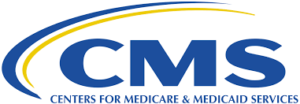 CMS announced that
CMS announced that  CMS has expanded the list of telehealth services that Medicare fee-for-service will pay for during the COVID-19 public health emergency, adding 11 new services to the Medicare telehealth services list. Medicare will begin paying for these services immediately and for the duration of the COVID-19 emergency. These new telehealth services include certain neurostimulator analysis and programming services and cardiac and pulmonary rehabilitation services. Go
CMS has expanded the list of telehealth services that Medicare fee-for-service will pay for during the COVID-19 public health emergency, adding 11 new services to the Medicare telehealth services list. Medicare will begin paying for these services immediately and for the duration of the COVID-19 emergency. These new telehealth services include certain neurostimulator analysis and programming services and cardiac and pulmonary rehabilitation services. Go  The letter refers to changes in how the federal Department of Health and Human Services wants hospitals to calculate the revenue they lost as a result of COVID-19 – the justification in part for the Provider Relief Fund payments hospitals have received through the CARES Act. In June, HHS told hospitals how to make that calculation but late last month it changed those directions in ways that could force many Pennsylvania safety-net hospitals to return some or even much of the federal aid they received.
The letter refers to changes in how the federal Department of Health and Human Services wants hospitals to calculate the revenue they lost as a result of COVID-19 – the justification in part for the Provider Relief Fund payments hospitals have received through the CARES Act. In June, HHS told hospitals how to make that calculation but late last month it changed those directions in ways that could force many Pennsylvania safety-net hospitals to return some or even much of the federal aid they received.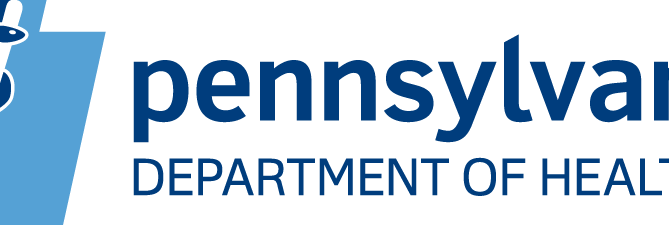
 Provider Relief Fund
Provider Relief Fund Department of State
Department of State  Congress has passed, and the president has now signed,
Congress has passed, and the president has now signed,  The NIH has
The NIH has 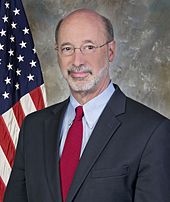 Governor Wolf and Health Secretary Levine introduced “COVID-19 Alert PA,” a new cell phone app that the state hopes will facilitate contact tracing. The app, which works on Android and Apple cell phones, uses bluetooth technology to identify people who were recently near someone who has been diagnosed with COVID-19. The app notifies individuals who may have been exposed and directs them to resources but does not provide the name of the person who was diagnosed and does not provide the state with the names of people who may have been exposed, protecting the privacy of everyone involved and leaving responsibility to act at the discretion of the people with the app on their phone. The app, which is free, does not track people and their location. Learn more from this
Governor Wolf and Health Secretary Levine introduced “COVID-19 Alert PA,” a new cell phone app that the state hopes will facilitate contact tracing. The app, which works on Android and Apple cell phones, uses bluetooth technology to identify people who were recently near someone who has been diagnosed with COVID-19. The app notifies individuals who may have been exposed and directs them to resources but does not provide the name of the person who was diagnosed and does not provide the state with the names of people who may have been exposed, protecting the privacy of everyone involved and leaving responsibility to act at the discretion of the people with the app on their phone. The app, which is free, does not track people and their location. Learn more from this